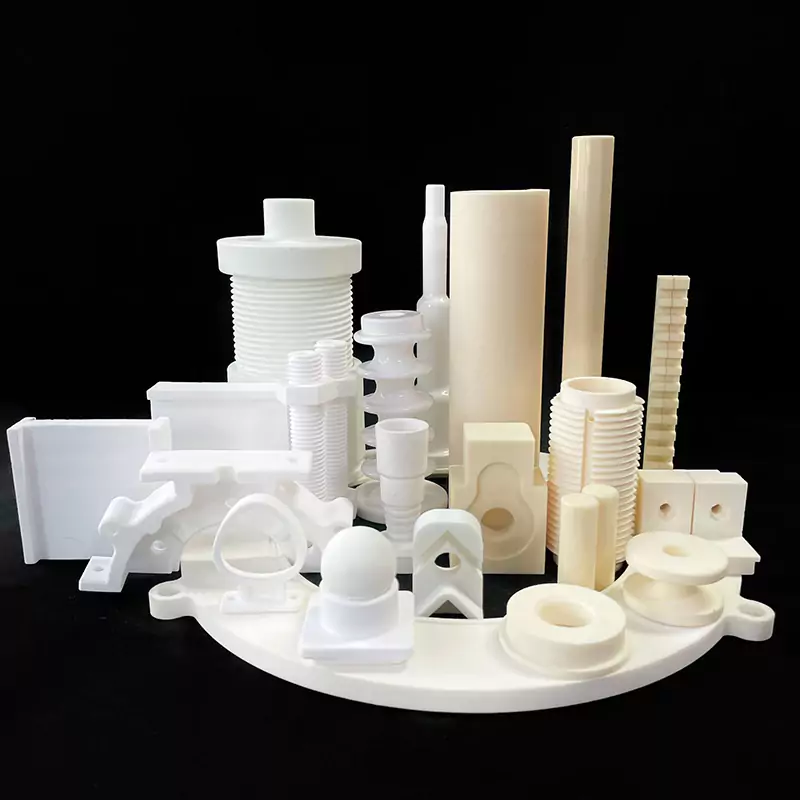Alumina stands as a widely utilized technical ceramic material, while zirconia also finds extensive use in various machinery industries. As a manufacturer specializing in advanced ceramics, we aim to elucidate the distinctions between alumina ceramic and zirconia ceramic.
Regarding performance:
1. Zirconia ceramics exhibit twice the density of alumina ceramics, boasting a bulk density of 6.05g/cm3 compared to alumina’s 3.7g/cm3. This higher density grants zirconia superior compressive properties.
2. The toughness of zirconia ceramics surpasses that of alumina ceramics by a factor of four. Exceptional toughness in zirconia mitigates the inherent brittleness associated with ceramics, resulting in heightened wear resistance and significantly extended product lifespans.
3. Zirconia components achieve a smoother surface finish. Following grinding and processing, zirconia attains a finer surface finish with a roughness of approximately Ra0.02, yielding a mirror-like, exceptionally smooth surface with a reduced coefficient of friction. In contrast, alumina exhibits roughness levels around Ra0.2 to Ra0.4.
4. Zirconia ceramics excel in thermal insulation, boasting thermal conductivity less than one-tenth that of other ceramics.
In terms of pricing:
Alumina is generally more cost-effective than zirconia due to lower raw material expenses and the high processing costs associated with zirconia ceramics.
Regarding applications:
1. Alumina ceramics are capable of withstanding higher temperatures and are commonly employed in industrial furnaces.
2. Zirconia’s superior wear resistance makes it a preferred choice for applications such as mortar and pestles, grinding jars, grinding media, bearing balls, and ceramic components in valves and pumps.
3. Zirconia exhibits excellent corrosion resistance, making it suitable for prolonged use in highly corrosive environments, particularly in chemistry laboratories.
In summary, zirconia ceramics find suitability in applications characterized by high loads, high strength requirements, and chemical corrosiveness, while alumina ceramics are better suited for applications with lower loads, elevated temperatures, and heat dissipation needs.

